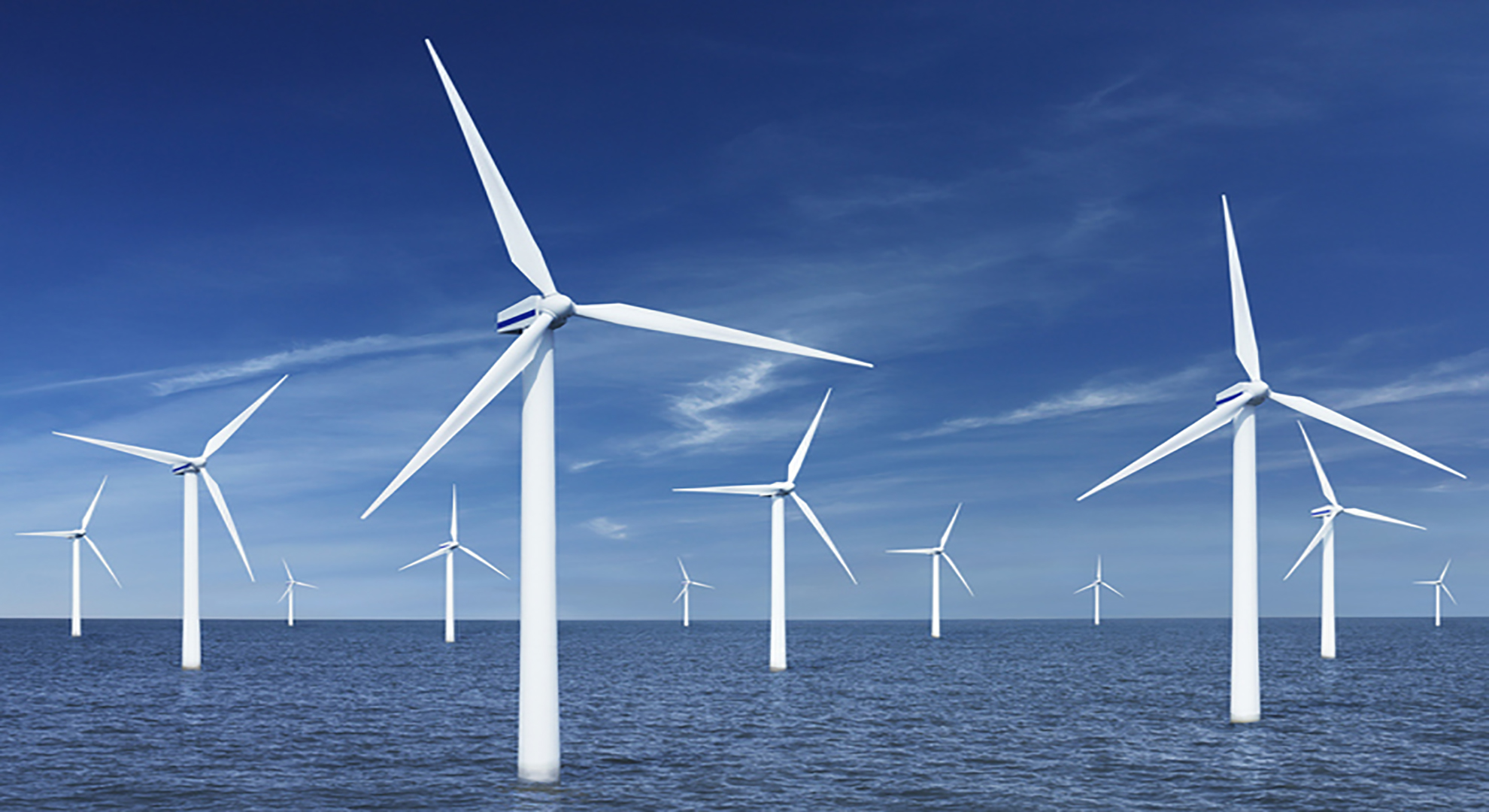
06 Aug Offshore and onshore wind energy, the key to our 5G and 6G future
Research and development led by experts across the world has focussed on the same goal for a number of years now: clean and efficient renewable energy. Although nuclear energy continues to be one of the preferred energy sources for now, wind energy is gaining ground faster than ever. In 2019, 10% of energy generated came from wind.
Within wind energy, offshore (or marine) wind energy is taking on a greater role. Out of every 60 Gigawatts of wind energy produced worldwide, 6 come from offshore infrastructure, for the moment. Owing to its innate characteristics, it could be the answer to our global demands for renewable energy when combined with connectivity technologies, like 5G, to facilitate remote management and maintenance.
Clean energy from off the coast, thanks to 5G
As the name indicates, this type of renewable energy is based on installing wind turbines some miles offshore. A lack of obstacles and the greater force of offshore winds means wind farms at sea perform better and are more efficient than their counterparts on land. However, some special infrastructure is required.
- Resistant wind turbines: whether fixed or floating, they need to be able to withstand the force of both the winds out at sea and the onslaught of heavy tides. Fixed turbines are usually better adapted to locations closer to the coast, while floating ones are more appropriate for locations further offshore.
- Connected farms: the key to guaranteeing a wind farm’s continued operation at full capacity is connectivity. Given lots of the facilities are sited far from any populated areas, it’s important they can be managed practically without any human intervention whatsoever. This is where the all-important increased capacity, low latency and reliability of 5G technology – and 6G in future – comes into play, alongside AI. In these situations, remote management is the answer.
Spain at the forefront of renewable energies
According to data from Spain’s Wind Energy Business Association, the country occupies a number of prominent positions among those betting on the success of this type of development. More specifically, 25% of the technology being implemented is national infrastructure. Spain’s goal is to lead the world’s market. And that shouldn’t be surprising, in a country with almost 8,000km of coastline. Great Britain is also looking at offshore wind with some ambition. 190 new wind turbines are being installed in the North Sea, with the capacity to generate some 3.6GW.
Nevertheless, Spain is still one of the European countries setting the pace when it comes to renewables. The country is home to 1,200 wind farms – 21,000 individual wind turbines – that have an installed power well above 25,000MW. Considering forecasts tell of significant progress in the 5G rollout as 2021 rolls on, we could be talking about a pre-eminent position within the European Union, in a market with obvious strategic capabilities, on an economic level.
The Belgian bet
Belgium – Europe’s fourth biggest offshore wind producer – is also paying close attention to renewable energy developments and 5G. In fact, they’re set to use part of their European funding for economic recovery to build a five hectare ‘functional energy island’, that’s around the size of five football fields, 40km off the coast. This would create an offshore complex where extracting energy from the wind and producing ‘green hydrogen’ could be combined, along with the installation of 5G and 6G antennae.
Belgium’s Energy Minister, Tinne Van Der Straeten, is confident that with support from European funding, electricity rates from this island would be even lower than they are today. Although the project remains in the technical investigations phase and has been shelved a number of times in recent years, owing to the complexity and costs involved, an injection of capital from the European coffers could represent a significant turning point and a real boost to the project.

